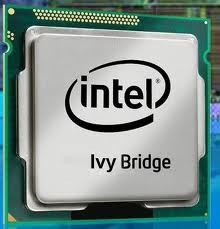Intel’s Ivy Bridge shores up after a long wait of six months – Part 3
Thursday, April 26th, 2012 5:35:14 by Usman Khalid
The real upgrades in ultrabooks and tablets will start with the rise of Win8. Coupled with the new processors, the new version of Windows is expected to run a hot streak in the coming years.
However, until that time, the consumers will have to keep their peace with Windows 7, and who knows a faster CPU in the shape of Ivy Bridge may favour the current version of the operating system more than it is expected to the fall release.
The current processors announced by Intel are focusing on quad-core and dual-core desktops and high-end laptops versions. The company is expected to release the dual-core processors for mid-range laptops and not to mention the ultrabook line.
Apple is also expected to revamp its line of Macbook Pro and Macbook Air with Ivy Bridge technology. The company is expected to release the new line of its notebooks in the coming fall.
Following are the main features that the new Ivy Bridge brings to the table.
- The achievement of the new processor is twice the number of silicon transistors that will be the first to use the Intel’s 3D transistor technology. This is more essential to sustain the Moore’s Law by doubling the number of transistors every two years, like what Intel did with the Core i-series a couple of years ago.
- The USB 3.0 mechanism is built in the Ivy Bridge silicon, first time in the Intel-built processors. This will promote a more universal use of the USB 3.0 technology once it is integrated in the CPU.
- The biggest achievement in the new processors is the enhanced support for graphics, especially 3D graphics, both polygonal and stereoscopic. Intel calls the graphics component HD 4000 in the Ivy Bridge circuit.
- Intel will support both OpenCL and DirectX 11 in the chip’s graphics component for the first time.
Short URL: https://www.newspakistan.pk/?p=20385

















